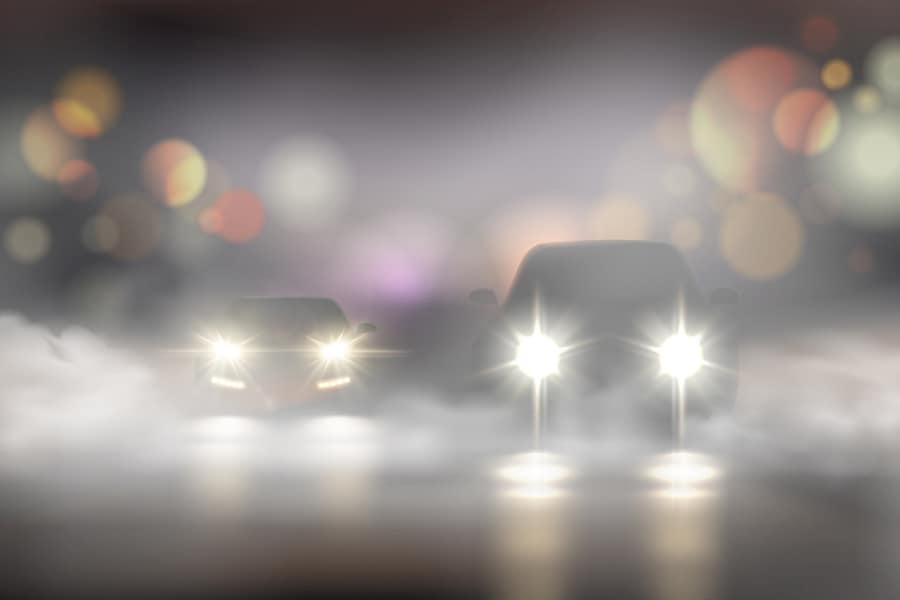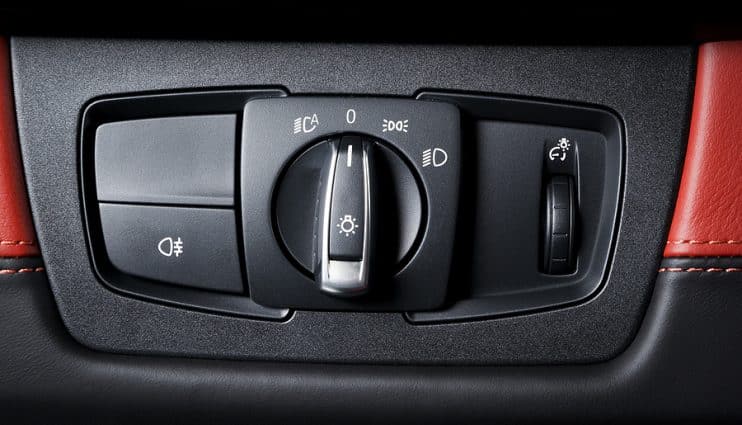
You’ve been out and met some friends. The subject of when to use fog lights has come into the conversation, and no one seems to have the answer. What do you do next? That’s right. You turned to good old Google and found this article.
We’re keen to clear up this age old argument once and for all. Many drivers do actually use their fog lights at the incorrect time, and maybe you or your friends could be one of them. Let’s settle this matter once and for all.
A Little History
As with all technology, lights have come a long way over the years. So much in fact that fog lights can often seem like a hangover from the past. However UK law still clearly states that fog lights at the rear are a legal requirement on all cars, whilst some manufacturers like to include front based fog lights as a feature on their premium models.
As you’d expect fog lights are designed to ensure your vehicle gives off maximum visibility during certain kinds of bad weather and poor visibility. With newer cars you can even see the LED daytime running lights (DRLs) that have become a legal requirement, which serve the same purpose. They’re not there to light the way for the driver, but rather alert other road users to the vehicle’s presence.
When to Use Fog Lights… And When to Not
Now we’ve set the scene. Let’s talk about the best times to use your fog lights, and perhaps more importantly, when they should remain firmly off.
Do use your fog lights…
- When there’s mist, fog snow or heavy rain, fog lights will make you more visible.
- The Highway Code (Rule 226) states that you must use headlights when visibility is less than 100m. In these
situations you may also use front and rear fog lights, but the rule is you must
turn them off when the visibility improves.
- As a rule street lights on normal urban roads are placed roughly 180 metres apart. If you cannot see the
next streetlight when you’re passing under the closest one, then it could be
time to switch on the fog lights.
- Fog lights are not needed when there is good visibility at night. Your normal car lights, including your headlights and tail-lights should be enough to alert other drivers to your
presence.

And don’t use your fog lights…
- If you are using your fog lights in the morning due to mist or fog and the visibility is poor and then it improves, you must remember to turn the lights off. Equally it’s a good idea to check they are turned off should you park up during mist, which then clears
whilst you’re waiting.
- Fog lights won’t help with visibility when it’s dry, either before or after dark. They don’t use the same kind of powerful reflectors as the main beam lights and won’t give you more illumination.
- And finally, believe it or not, don’t use fog lights when it’s wet out there. The lights will actually reflect off the road and rain and can dazzle other drivers on the road and
impact their visibility. Rather than getting seen, you’ll blind them to your
presence.
How do You Use Your Fog Lights?
Fog lights have their own switch, separate from other light controls, which can be located on a stem or operated via a button on the dash. Often the rear fog lights have an amber light and the front fog lights use a green light in the driver’s display array. Check your owner’s manual for full details on how to turn this vital system on and off.
Is it Ever Illegal to Drive with Your Fog Lights Activated?
As you’d expect, the answer is yes. There are situations where you can dazzle and impair the vision of other drivers, as we’ve demonstrated previously in this article. The Road Vehicles Lighting Regulations (1989) has provisions that forbid drivers from using your fog lights. If there’s clear visibility or only rain you could potentially be stopped by the police and fined.
Why You Should Use Your Fog Lights
Hopefully you’re able to see the importance of your fog lights after reading through this article – but also be aware if you have a crash in poor visibility and you didn’t have your fog lights on, then you could invalidate your insurance. Keep one eye on this important system and if there’s poor visibility, then you’ll want to take extra care with your driving too.
Hope this clears up the question – in the same way the fog lights help clear up the visibility on your journey.







.png)